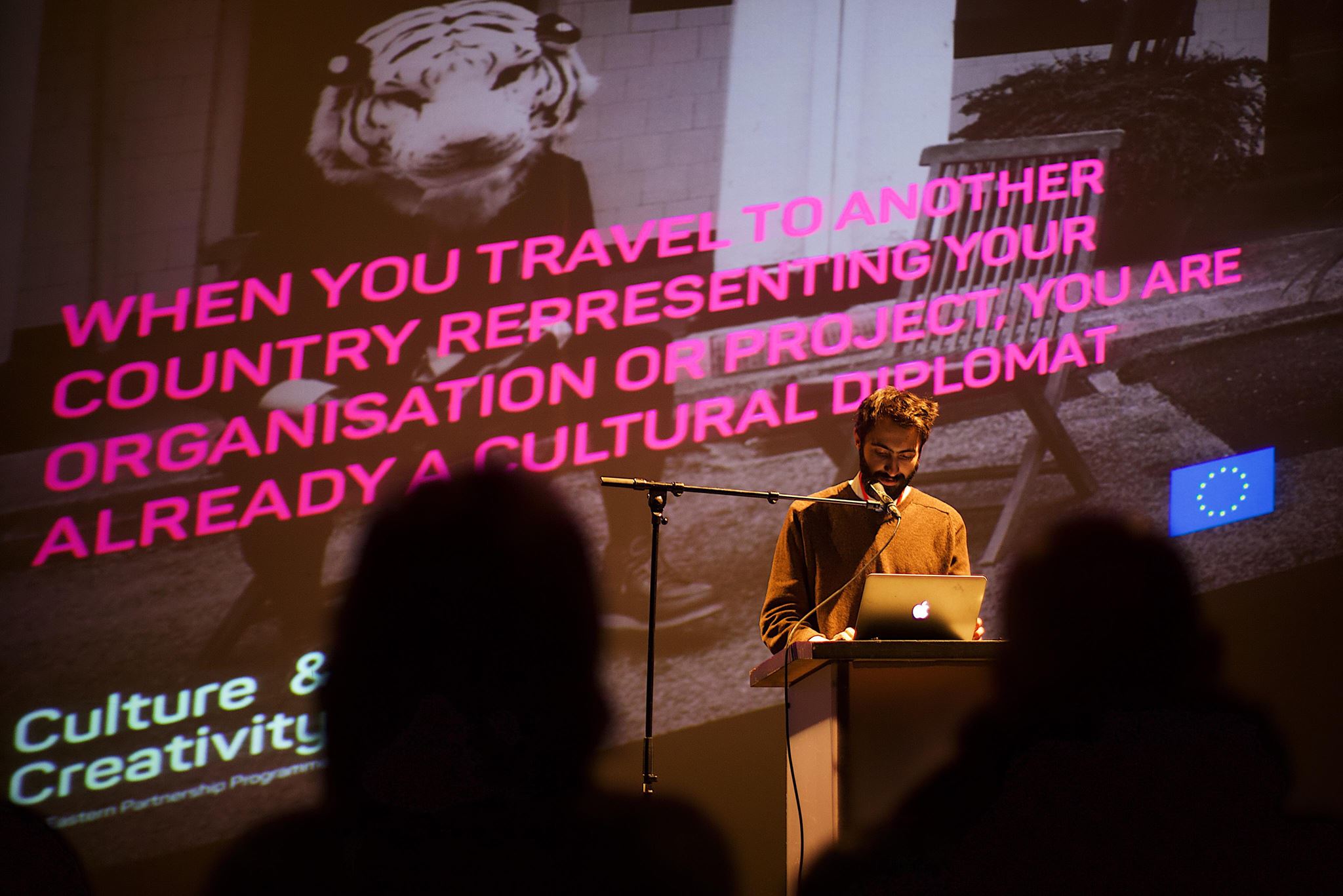Alumni
Illia Yakovenko / Ілля Яковенко
I’m an artist and a citizen cultural ambassador from Ukraine in Portland. I’ve received a Fulbright scholarship and currently pursue a graduate degree in Art and Social Practice at Portland State University. On this page, I share my cultural exchange activities in the United States.
International Acquisition Committee
Currently I’m an artist-in-residence at the Dr Martin Luther King Jr School Museum of Contemporary Art (KSMoCA). There I’m working on the International Acquisition Committee. The committee consists of myself and a group of Dr. Martin Luther King Jr Elementary School students, together with whom we learn about international art and artists in creative and experiential ways (engaging with artists, recreating artworks, exploring their meaning and its relation to students’ own experience and the local context). One of our goals is to start a collection of international art and bring international artists to KSMoCA.
KSMoCA Presentations
In this presentation I’m giving a general overview of the International Acquisition Committee and sharing my own collection of Soviet coins, badges, and postcards:
Cultural Exchange Mission
Ukraine has become widely present in the American media and political discourse since the Maidan Revolution followed by the Russian intervention, and the recent impeachment inquiry. But how well do people in the United States know about Ukraine, about its history, politics, art, and culture? People often ask me about the food we eat in Ukraine but rarely about the Maidan Revolution or political issues Ukrainian artists, or society, are dealing with in their work or everyday life. Currently Ukraine is facing Russian intervention, war, other global and domestic challenges and is desperately in need of being supported as an independent country with its own political agency and representation.
Ukraine was always hard to grasp, define, subject or subjugate, and it often served as a destabilizing factor for the imperialist politics of Russia and the Soviet Union undermining it from the inside. Sometimes it is even challenging for Ukrainians to define their own identity and find a consensus on what their country should be like. But instead of seeing it as a negative factor, I propose to recognize it as an endless horizon of possibilities consisting of constantly changing identities and openness to social diversity and inclusion that is foundational for a sustainable democracy.
I hope this resource will help to establish a deeper mutual understanding between the people of Ukraine and the United States.
This webpage is a social practice artwork. It is not an official site of the Fulbright Program or the U.S. Department of State. The views expressed on this webpage are entirely those of the artwork participants and do not represent the views of Illia Yakovenko, the Fulbright Program, the U.S. Department of State, or any of its partner organizations.

Cultural Exchange Reports
Eastern European Groceries Tour with Artist Michael Bernard Stevenson Jr.
My student mentor Artist Michael Bernard Stevenson Jr. took me to visit Eastern European grocery stores in Portland. During our trip we visited approximately five grocery stores. A map of the stores is coming soon.
Storefronts (visual analysis)
Most of the stores appealed to recognizable Soviet and Russian images in their design. Only one storefront had a sign written in Ukrainian. Although people inside that store were mostly speaking Russian. Whereas some staff members at the store that had an image of St. Basil’s Cathedral at the storefront were speaking Ukrainian.
Goods
I very rigorously examined the products available at the stores. Most of the things are being imported from the former Soviet countries including Ukraine, Russia, Belarus, Kazakhstan, etc. We found the same brand of candy Chervony Mak (UA) or Krasnyi Mak (RU) currently produced in both Ukraine and Russia but that has originated in the Soviet Union. The Russian candies are continued to be produced at the formerly Soviet Red October (Krasnyi Octyabr) candy factory. Ukrainian candies are produced at the Roshen factory that belongs to the former president of Ukraine Victor Poroshenko. I told this to Michael and later to other people while they were tasting the candies. I personally think the Ukrainian version tastes better. We also spoke about the war in Ukraine and the Russian intervention.

by Artist Michael Bernard Stevenson Jr. 


The topic of war emerged again when we were trying condensed milk. We got a can at one of the grocery stores. The can had a very recognizable Soviet design even though it was produced in the United States. Condensed milk associates in America with Vietnamese coffee and the Vietnam War.
Dinner
We further had a dinner made out of boiled potatoes, pickled cucumbers, sauerkraut, Moldavian white cheese (brynza). I told that people in Ukraine are usually having this food during the winter because it is more accessible. Everyone was positively impressed by the food!
Contact
Illia Yakovenko
Master of Fine Arts Candidate in PSU Art and Social Practice
SoFa Journal editorial board member
Social Practice Club student administrator (PSU’s Student Activities and Leadership Program)
Student Art Mentor at KSMoCA (volunteer position)
Office Hours
Remote, by appointment;
Office Address
RemoteRoom 158E
PSU Science and Education Center (SEC)
2130-2136 SW 5th Avenue, Portland, OR 97201-4908
Email
iykvnk @ gmail.com and iy2 @ pdx.edu
Website
http://illia.cf







